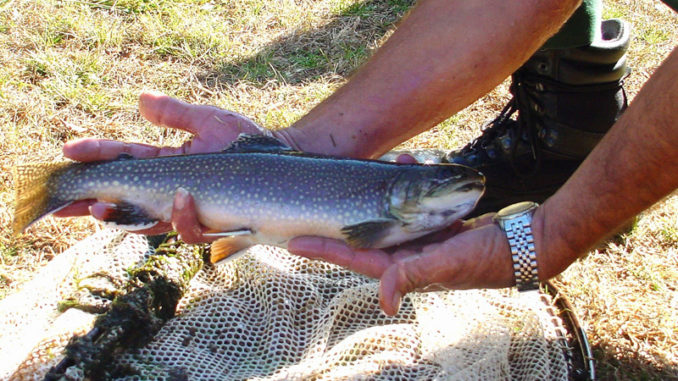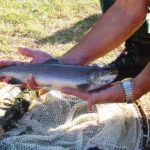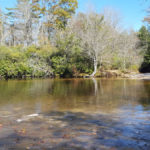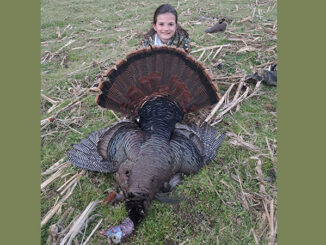
Valley in NC mountains offers wild brook trout
This is home to some good wild brook trout fishing. Deep in picturesque Panthertown Valley, flanked by massive rock cliffs and high wooded ridges, the Tuckasegee River begins. It is formed by the junction of Greenland and Panthertown creeks. This is brook trout country. And the streams are like no other mountain headwaters streams.
Instead of rough, tumbling, boulder-filled, clear-water streams, these creeks are flat, smooth, sandy-bottomed and tea-colored. They resemble streams typical of South Carolina’s Lowcountry more than North Carolina’s mountains. Corporate executives once owned these waters. But Greenland, Panthertown and a mile or so of the upper Tuckasegee are now part of the Nantahala National Forest. Now, they are designated as public fishing waters. And the N.C. Wildlife Resources Commission manages this area for catch-and-release only fishing.
The brook trout that populate these streams — and they are abundant — also are unlike any wild brook trout found in headwaters streams. They grow to 9, 10, even 12 inches, massive compared to the 4- to 6-inch brookies common throughout the mountains.
Wade fishing is the best option
Although the brook trout here are stream-born, they are not true Appalachian brook trout. These “specks,” as many old-time mountain fishers call them, are northern brook trout. They were heavily stocked throughout the region in the early 1900s to replenish native fish that were destroyed by logging operations.
The Tuckasegee headwater streams do have some characteristics of mountain headwaters streams: rhododendron-lined banks and spectacular waterfalls. Schoolhouse Falls is the best-known and most-scenic. It’s a short distance upstream from the junction of Greenland and Panthertown creeks. Below the falls is a massive pool, usually the first fishable waters a trout fisher sees when he or she walks down into the valley. Go ahead and make a cast or two. Everyone else does. The better fishing is upstream and downstream of the falls.
Panthertown Creek is the major tributary in the valley and the most accessible. The easiest way to fish it is to stay in the water. Otherwise, you’ll be constantly crawling through rhododendron thickets.
Greenland Creek, which is smaller, has plenty of brook trout, but it’s more difficult to fish. Due to the laurel thickets along its banks and low-hanging tree limbs, it is much like fishing in a tunnel. You have to stoop a lot, and you have to be very proficient at the sling-shot method of fly-casting.
This is a hike-in spot
Lower down, beyond the confluence of the two creeks, the Tuckasegee is wide enough for two people to fish. Anglers can wade this mile or so stretch of water, but the water occasionally gets chest deep. The lower end of the valley, and part of the Tuckasegee River, is privately owned.
The valley is not accessible by motor vehicle. Fishers must park about a mile above and hike in on a rough gravel road. Judging from the numerous night crawler containers along the banks, the streams are heavily poached. The area’s remoteness makes it difficult for wildlife officers to effectively monitor the streams.
Anglers can fish the headwaters creeks and the upper section of the river with either flies or spinners, as long as the spinners have single hooks. All trout must be returned to the water.
Easiest access to the valley is from Cashiers. From US 64 east from Cashiers, turn left on Cedar Creek Road, go 2.2 miles and turn right on SR 1121, aka Nicholson Lane, and drive to a U.S. Forest Service designated parking lot. From there, a footpath takes you to a gravel road and to the bottom of the valley. Camping is permitted in the valley except in areas posted with no-camping signs.







Be the first to comment